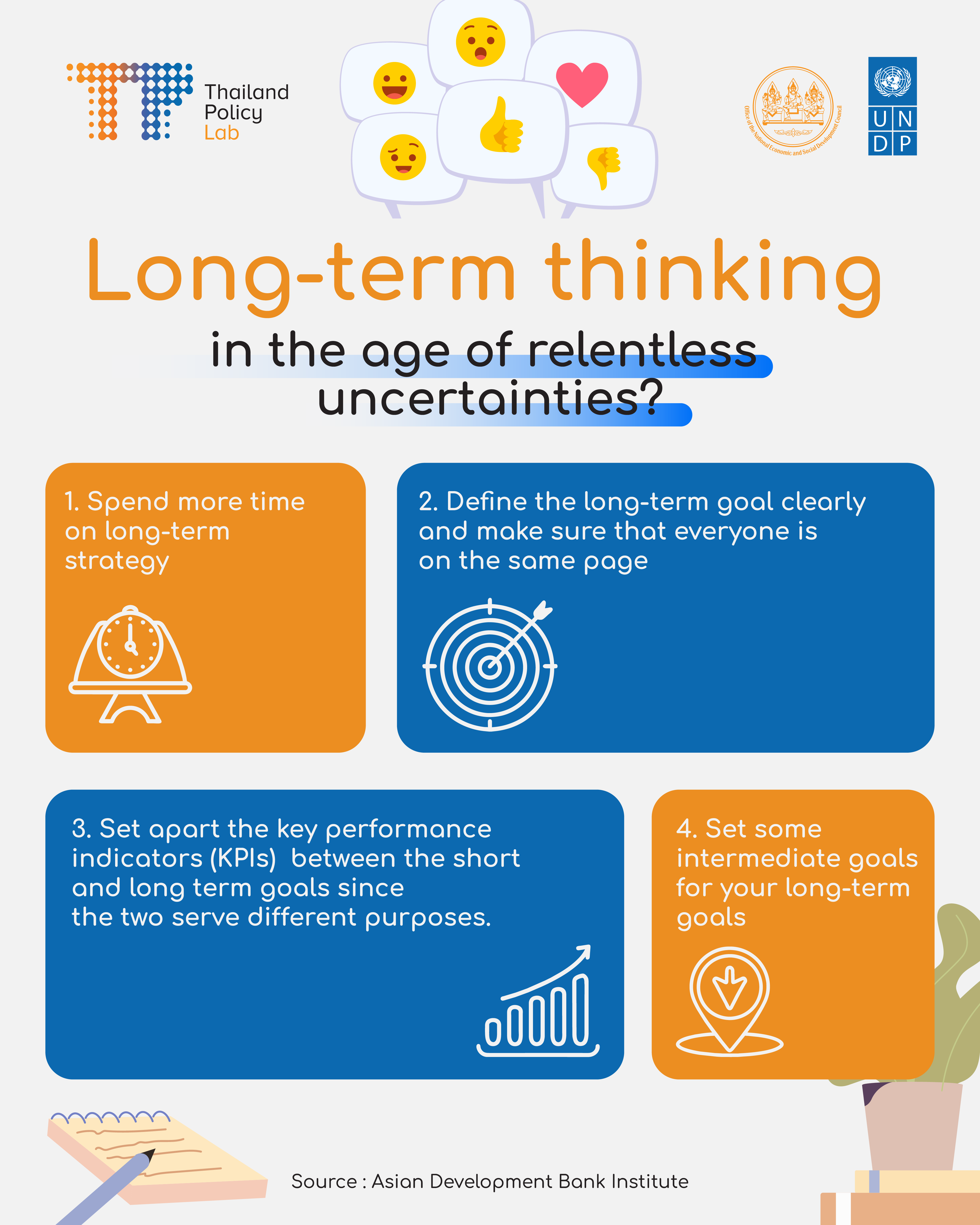In the ever-changing and more complex world of policymaking, policy people tend to focus on what is at hand and more immediate, and forget about the long-term goals. The critical moment in the present is indeed urgent, but what is needed is a balance between short-term and long-term solutions, without which an enduring damage may be caused and turned into boiling undercurrents. Global warming is an example of stacking problems created by short-term solutions that cause long-term damages such as temperature fluctuation, El Niño, and wildfires.
How do policymakers strike a balance between short and long term goals? Here are some tips:
1. Spend more time on long-term strategy – even though what is at hand compels you to act immediately, don’t forget to think about long-term solutions so that you don’t get lost on the path towards the policy goal.
2. Define the long-term goal clearly and make sure everyone is on the same page – the short-term goal could be to solve what is in front of you but the long-term goal is to achieve the organisation’s objectives.
3. Set apart the key performance indicators (KPIs) between the short and long term goals since the two serve different purposes, their assessments must be different.
4. Set some intermediate goals for your long-term goals. Intermediate goals will help you to see the long-term goals more clearly. You could set a short-term goal for education development as improving students’ PISA performance and set an intermediate goal as students being admitted into top-tier universities.
Sweden is one such example of a country that took a step back to reorient its long-term goals in the 1990s when the country faced critical fiscal instability with high unemployment rates accumulating from the Second World War. The country restored itself by focusing on sustainable development and long-term goals. With the government emphasising on long-term impacts on economy, society, and environment, an extensive reform happened in terms of taxation, transportation and energy, benefits for the unemployed, and more attention paid to the youths.
Sweden also recovered partly due to its business sector incorporating sustainable goals, resulting in its GDP becoming higher than the averages of other European countries in the 1990s.
No matter how urgency screams at you in the face – do not forget to plan for the long-term goals, or else the problems could accumulate into undercurrents ready to erupt just like Sweden’s economy after the Second World War. Policymakers can start from making time for strategic planning and setting intermediate and long-term goals so you shall not get lost along the way.
Source:
Asian Development Bank Institute
Be the Business
PWC

